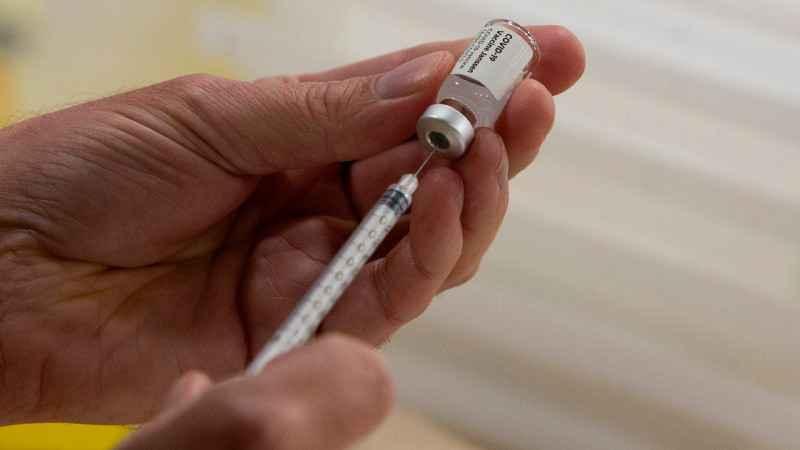Counties with higher vaccination rates still seeing substantial COVID transmission rates
[anvplayer video=”5048221″ station=”998122″]
Since the Centers for Disease Control and Prevention announced its new mask recommendations last week, COVID transmission rates have increased in Minnesota. Eight counties are at a high level of transmission while 37 counties are considered areas of substantial spread.
“Delta is more transmissible than other strains we’ve seen in the past,” said Dave Johnson, the epidemiology manager for Hennepin County Public Health. “It’s the predominant strain in the country and it’s challenging us in new ways.”
According to the Minnesota Department of Health, the variant accounts for about 85% of cases in the state.
It’s pushed Hennepin County into the substantial spread designation despite having one of the highest vaccination rates. Seventy-seven percent of those eligible for the vaccine have received one shot.
Those who are vaccinated can still transmit delta, which Johnson said could be a factor.

In this April 30, 2021 file photo, a pharmacist fills a syringe from a vial of the Janssen, Johnson & Johnson, COVID-19 vaccine at the Vaccine Village in Antwerp, Belgium.[Virginia Mayo/Associated Press/File]
“It just means we have more tinder in the community, more chance for this to spread, having a slight increase in risk for someone who’s been vaccinated,” Johnson said. “That coupled with the large number of people who either can’t be vaccinated because they’re too young, or people who just haven’t taken the opportunity to get themselves vaccinated, those two things together mean that we’re seeing an increase right now in our community.”
He said it’s also important to look at the percentage of the overall population that’s received a vaccine. Only about 65% of the county’s total population has received one shot, while only about 62% of the total population is fully vaccinated.
“It’s not that the vaccine isn’t doing what we want it to do it is,” Johnson said. “The issue is that our vaccination rates are too low right now to be able to, on their own, stamp out the virus in our community and to control it in a way where we’re not having a risk of increased hospitalization and death.”
“We need more people vaccinated. It’s hard to know right now what an adequate number of people vaccinated [would be] but what we know, because it’s more transmissible, we need more people vaccinated,” he added.
The Minnesota Department of Health couldn’t provide a number either because data on the variant is changing. The state’s initial goal of 80% of the population was an estimate based on previous experience with other viruses, according to a spokesperson.
The percentage of people who need immunity to achieve herd immunity varies for each disease. For polio, about 80% of the population must be vaccinated. The number is closer to 95% for the measles, according to the World Health Organization.
The delta variant is significantly more transmissible than other forms of COVID-19.
“It’s concerning we haven’t achieved a vaccination rate that can protect us completely,” Johnson said. “Delta spreads more easily and part of our prevention strategy needs to be pushing as hard as we can on the vaccine, encouraging people to get vaccinated because that’s going to be part of the solution to get us back into a place where we are able to control the spread of disease more easily.”
Most COVID transmission in Minnesota is happening among the unvaccinated. MDH told 5 EYEWITNESS NEWS that pockets of unvaccinated Minnesotans are susceptible to getting the virus, even in areas with high vaccination rates.
There are areas of the state, however, where there are fewer people vaccinated and also lower transmission rates.
In Clearwater County, only about 35% of the total population is vaccinated, yet the county has moderate transmission rates.
“When we look at the county level rates, they’re going to be impacted in part by how much testing is actually occurring,” Dr. John O’Horo, an infectious disease specialist at Mayo Clinic, said. “I wouldn’t be surprised to discover some of these apparently lower transmission counties are reflecting some degree of under-testing at the moment.”
He also said population density could be a factor.
“We’ve talked about social distancing all along here so areas that are going to have people interacting closer proximity or unmasked are going to see a higher risk for transmission,” he said. “But even in low-density areas, it really depends on what you do as opposed to how many people are there.”
Both Dr. O’Horo and Johnson agree the vaccine is working in Minnesota. Hospitalizations, while growing, are significantly lower than they were during the pandemic’s peak last winter.
“When you look at the case counts, that only tells a very small part of the story,” O’Horo said. “You have to look at the hospitalizations and the deaths as well and both of those have fallen drastically, and that is testament to the vaccine success. The main reason to get vaccinated is you’re less likely to be hospitalized or have severe complications, including death from COVID-19.”
He went on to say, “This would be much worse without the vaccine.”